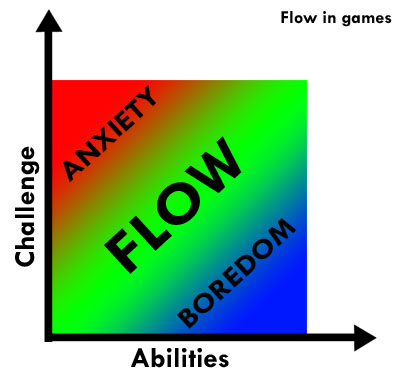Video game enthusiasts usually follow their favorite gaming companies in order to get the latest news on their upcoming releases. But while most people focus on AAA titles, some smaller productions can fly undetected by the radar.
Enter a game like 16 Squares. A relatively unknown mobile game, it suddenly shot onto social media and consuming the lives of its players. It has started to stack mentions on Twitter, with most of players sharing testimonies like the one below:

The developer explains the game on its Apple Store page as follows:
“16 Squares is a very simple & challenging puzzle game where you combine tiles to reach higher numbers.
- Drag tiles onto the board to place them.
- Place tiles with the same number next to each other to combine them & get higher numbers.
- Combine two ’10’ tiles to create an explosion that destroys all tiles near it!
- Play as long as you can before the board fills up & its game over!”
The rules are simple and so is the game — but why has it become successful in addicting its players? Let’s analyze the design of this app to find out!

Easy to play, difficult to master
This is one of the most important attributes of any well-designed video game, as it allows novice players to advance without difficulties through the first levels — thus building the confidence they need to play the game.
If a game is too difficult in the early stages and sends the user to a crushing defeat, players will probably assume the challenge is too hard for them and give up.
In 16 Squares, we can argue that any person can play through the first few levels of the game, making players think “okay, I can do this” and ensuring they feel competent enough to continue playing.
As the game progresses; however, it continues to get more difficult — until the point where passing a level is not a simple matter of interacting with the app, but mastering its logic.
Surprisingly, the increased difficulty in later levels does not make players give up. It actually has the opposite effect. It stimulates them to keep trying, especially since they’ve some this far.
This may seem counterintuitive, but it isn’t. Why does difficulty in the middle of the game drive players to continue investing their time, when difficulty in the early stages usually drives players away?
It is all a matter of human psychology.
In his book Influence: Science and Practice, Robert Cialdini shares his theory on the six key principles of persuasion — and one of them is “Consistency”. It affirms that after a person has entered a certain mindset, they will adjust future behaviors in order to reflect this mentality, because society sees people who have linear and coherent behaviors as more likable.
Let’s apply that to 16 Squares. Even after the game has become difficult, the original mindset of “okay, I can do this” lingers in the back of players’ heads. And for the sake of consistency, they’ll continue playing.
They still believe they can succeed, even if the reality of the game has changed. This, of course, is only one of the reasons why players become so engaged with this game. So let’s explore the next one:

It’s all about the flow
Have you ever been so immersed in a game that time became just a blur and your forgot about the outside world? If you have, you’ve experienced a psychological concept know as flow, colloquially known as “being in the zone”.
This concept was first introduced by the Hungarian psychologist Mihaly Csikszentmihalyi. He detailed his findings in the book Flow – The Psychology of Optimal Experience.
But how can someone design a game which makes players become so involved in it that they forget about anything but the game? The state of flow has eight golden rules. The first three are the requirements to achieve flow and the last five regard its consequences. We will see how 16 Squares tackles each.
1. Clarity of goals and immediate feedback
In this game, players never need to question what their objective is. The game clearly defines the goal and the rules to achieve it, so players do not need to become distracted wondering what to do. This allows them to focus exclusively on their in-game performance.
The immediate feedback players receive upon performing an action reinforces this. As soon as they do something, the game automatically delivers a visual feedback telling players if their action was positive or negative, so they never have to question whether they are performing well.
Another aspect to note on feedback is that the game tells players their score in real time. This is more than just a mere convenience. By allowing players to see their scores in reals time, they can know how close they are to reaching their own records.
The closer to their highest scores they get, the more motivated they feel to continue playing and surpass them. Progress creates progress.
2. A high level of concentration on a limited field
16 Squares only has one screen the player can interact with. This minimalist approach acts in the game’s benefit to create a state of flow in its users, as they can focus on only one place at all times — as opposed to spreading their attention across multiple locations.
3. Balance between skill and challenge
This principle connects to the “Consistency” factor of the six principles of persuasion mentioned earlier.
We have previously discussed that the “okay, I can do this” thought a player has after beating the first levels of a game transfers over to the more difficult ones, but this only works up to a certain point.
If the game becomes so challenging that it gives to the player zero hope of success, then players are likely to give up — regardless of the psychology behind a coherent behavior.
The task of a game designer is to craft an experience that is difficult, but that encourages the player to try again even if they fail. The trick to accomplish this is developing a game with a level of difficulty just slightly above the level of mastery of the player. This way, players will constantly need to improve their skills — but they will be so close that they will always believe they can improve just a bit and pass the level.
As 16 Squares contains an infinite number of levels, the difficulty is always progressing and so is the player. And as we said before, progress creates progress.

4. Feeling of control
Different games employ this sensation differently. But in order to achieve flow, a video game must allow players to have a sense of agency over the outcomes.
In 16 Squares it is easy to identify how the game approaches this, as the payers drag and drop the tiles onto the grid in order to move to the next level.
5. Effortlessness
This occurs not when the game is easy, but when players are so focused that instead of thinking of how hard the game is, they simply think of playing the game itself — giving the illusion that no effort is taking place.
6. An altered perception of time
Through all of the elements mentioned above, this sixth tenet is the natural consequence of flow. Once players become very engaged with the game experience, it is normal for them to lose track of time under the state of flow. Which explains why people can spend an entire afternoon dragging those tiles around in 16 Squares.
7. The melting together of action and consciousness
You know that moment when you’re in a game, and you become so focused on it that you don’t even have to think to react to it — you’re just acting on a sort of autopilot. That’s what this rule is talking about.
As players progress through a game like 16 Squares and it gets increasingly harder, they start to think faster and respond more naturally. They’re fully invested in the experience, and that enhances their performance.
8. The autotelic experience
From the Greek “autos” (self) and “telos” (goal), autotelic means to have a goal within yourself. You don’t play a game because you expect a measurable reward — you play because the fun you have is the reward.
It’s obvious how this applies to 16 Squares. Players don’t keep playing because they think they’ll get something tangible out of it — they want to see how far they can push themselves, how hard of a level they can complete, and how much they can beat their own records.

These factors explain why people play this game….but why do they come back?
An unbalanced brain
Once players of 16 Squares stop playing, they will probably wonder at some point or another if they can reach an even higher score than last time. And a lot of them will probably reach for their phones to find out.
This curiosity will cause their brains to become unbalanced. Or as the psychologist Jean Piaget says, it will lead to a “disequilibrium in the brain”.
But what is a disequilibruim and how does it relate to gaming? Well, disequilibrium is defined as:
“…our inability to fit new information into our schema. When you come across information or experiences that do not fit into your current knowledge base, this is where disequilibrium begins.”
In short, not knowing something and being aware of this state of ignorance creates a discomfort in a person, which we all know as “curiosity”. Wondering if they can get higher scores, players of 16 Squares will play again — purely because the unbalanced brain needs to discover whether they can reach a higher score. By playing more, the question is answered and their brains reach equilibrium.
So what have we learned?
Even a simple game as 16 Squares can dig deep into the human psyche and explore it to attract more players. So, next time you are playing a game, try to identify how it makes use of the concepts mentioned in this article. It might teach you a lot about your own mind.







Published: Jan 21, 2017 03:26 am